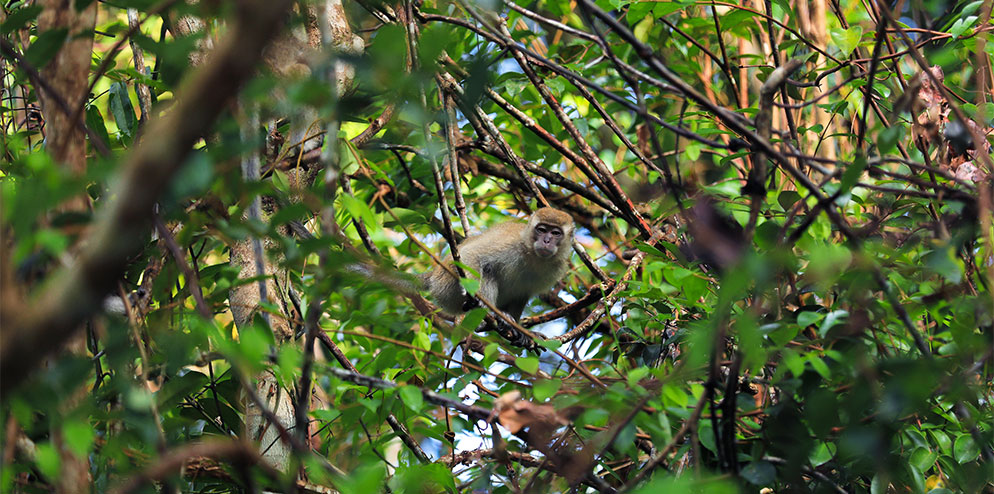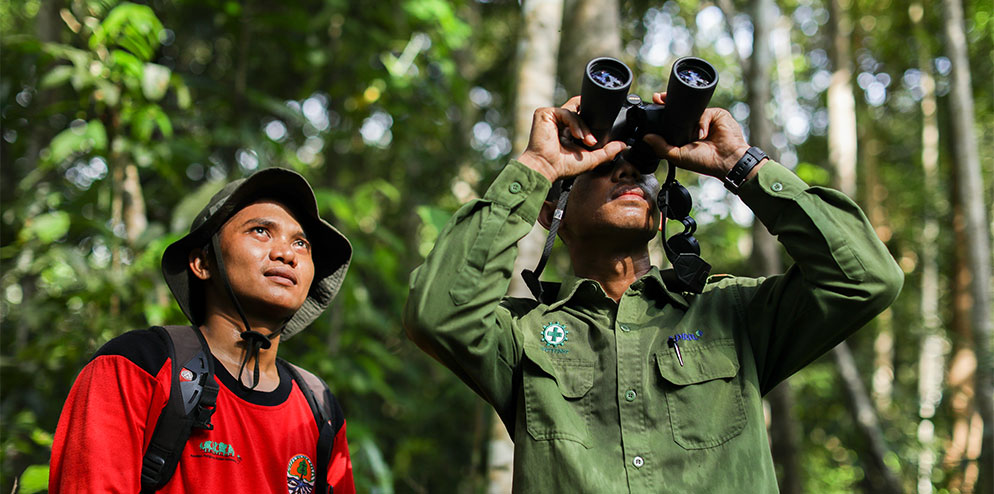Developing a sustainable long-term management strategy for the Kampar Peninsula requires a detailed measurement and understanding of its biodiversity.
Fauna & Flora International (FFI) partnered with RER to develop its management framework and to advise on policies and practices for the biodiversity assessment, climate issues and community liaison. In 2015, FFI field teams began extensive surveys to compile a species inventory covering woody and non-woody plant species, and mammal, bird, reptile and amphibian species.
The inventory covered three of the four ERCs licensed to APRIL in the Kampar peninsula by the Indonesian Ministry of Environment and Forestry, namely: PT Gemilang Cipta Nusantara, PT Sinar Mutiara Nusantara, and PT The Best One UniTimber. The inventory for PT Global Alam Nusantara will be carried out in 2020.
This initial inventory covered 92,507 ha or approximately 70 percent of the RER area on the Kampar Peninsula.

RER employs camera trap surveys to continue to assess the remarkable range of species present in the RER, building on the initial biodiversity surveys carried out by FFI.
Camera traps are a key tool in discovering species in the Kampar Peninsula and Padang Island concessions. For example, during 2017, RER installed a total of 84 cameras over 7,758 nights, capturing 6,310 snapshots and videos that have made possible the identification of up to 52 species of animals.
One of the benefits of using camera traps is their ability to identify hard-to-detect species, such as the Blue-winged Pitta (Pitta moluccensis), whose presence inside RER was recently confirmed for the first time in photographs as well as in camera trap videos.
Evidence from the cameras suggests that RER has the potential to support breeding populations of the Black Partridge (Melanoperdix niger) which have been spotted in male and female pairs. These discoveries add to RER’s rich diversity, taking the total avifauna on the Kampar Peninsula to more than 300 species.
While the compiling of species inventories is ongoing, as of January 2024, a total of 893 species of fauna and flora have been recorded, including 78 mammals, 106 amphibians and reptiles, 319 bird species, 201 plants, 89 fish species, and 100 odonates. 75 of them are globally threatened species, including the critically endangered Sumatran Tiger and Sunda Pangolin.
